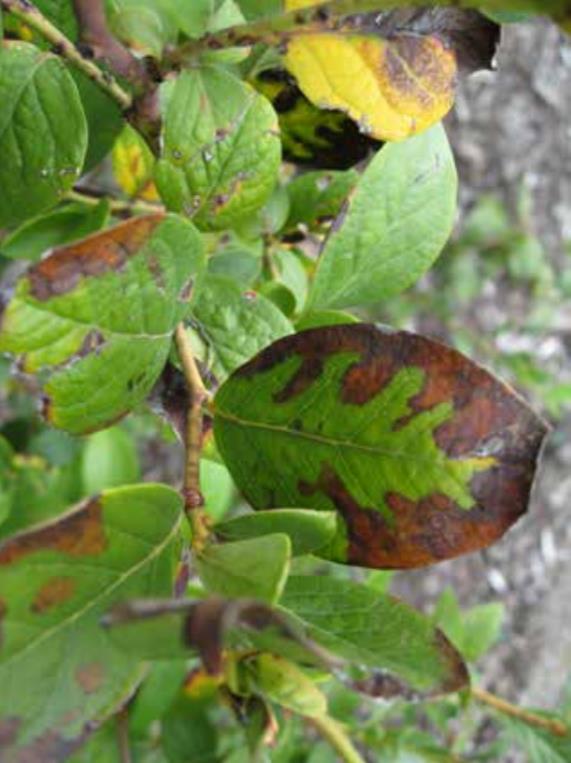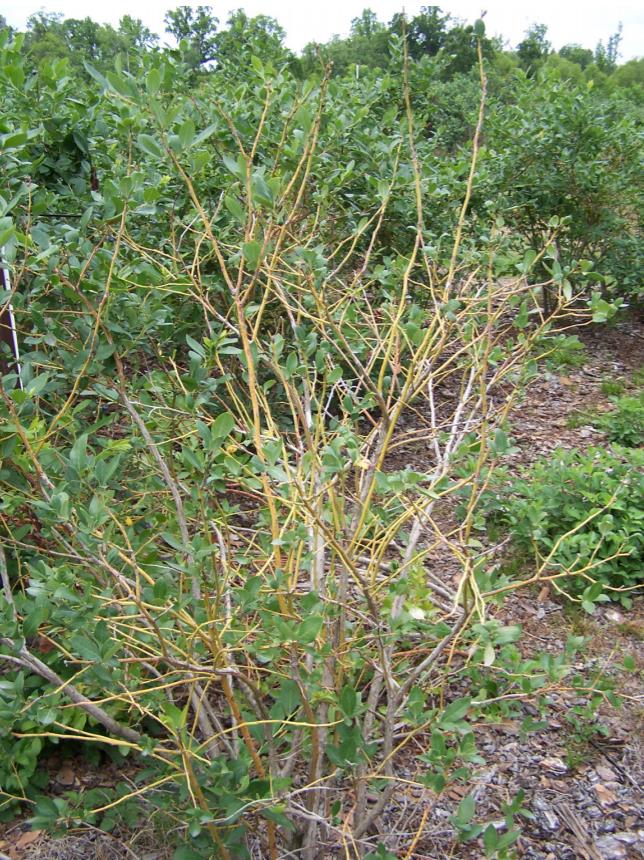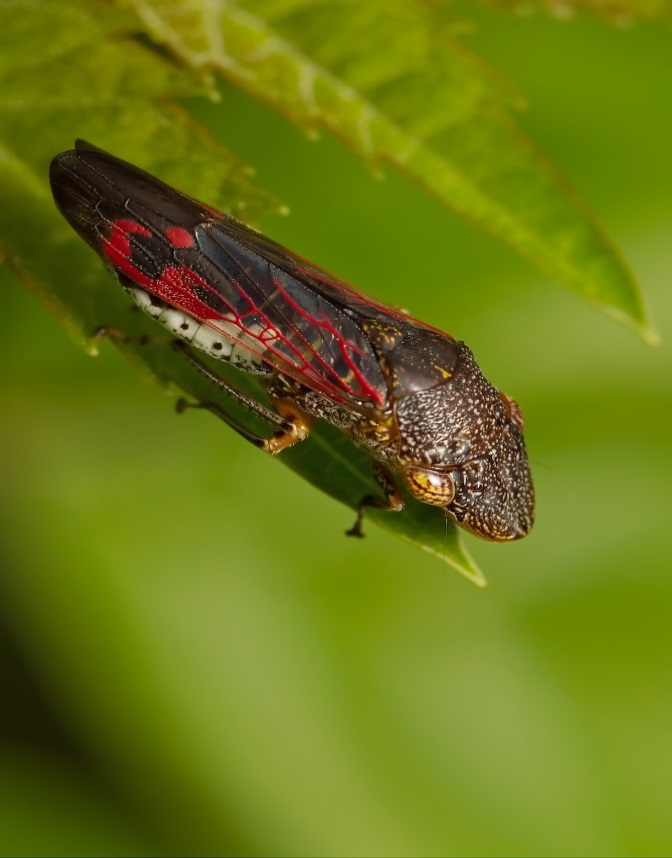
Bacterial leaf scorch of blueberry
| Primefact number | Edition | Published | Author |
|---|---|---|---|
| 1623 | First | Jan 2018 | Plant Biosecurity and Product Integrity |



Bacterial leaf scorch of blueberry (Xylella fastidiosa) is an exotic plant pest not present in Australia. This disease is a serious threat to Australia’s blueberry industry.
Bacterial leaf scorch of blueberry is caused by the bacterium Xylella fastidiosa. The bacterium lives and multiplies in the sap, blocking water uptake to the leaves.
Sap feeding insects spread the disease between plants. Once a plant is infected there is no treatment but to destroy infected plants in an attempt to minimise spread.
Xylella fastidiosa is responsible for a number of diseases in other horticultural crops, including Pierce’s disease of grapevine, citrus variegated chlorosis and alfalfa dwarf disease. No strains of Xylella fastidiosa are present in Australia.
Notifiable status
Bacterial leaf scorch of blueberry (Xylella fastidiosa) is a notifiable plant disease in NSW.
All notifiable plant pests and diseases must be reported within 1 working day. You can report notifiable plant pests and diseases by one of the following methods:
- Call the Exotic Plant Pest Hotline 1800 084 881
- Email biosecurity@dpi.nsw.gov.au with a clear photo and your contact details
- Complete an online form
A full list of notifiable plant pests and diseases can be found in Schedule 2 of the NSW Biosecurity Act 2015.
Description
Bacterial leaf scorch symptoms first appear with the tips or edges of leaves developing a burnt appearance along the leaf margin.
The ‘burnt’ edge of the leaf progresses unevenly towards the mid rib with a fairly distinct line between the dead part of the leaf and the inner green tissues (Figure 1).
Infected leaves drop from the bush and young stems may turn yellow. Once the leaves have dropped, the plant takes on a skeleton-like appearance (Figure 2) and eventually dies.
Damage
The presence of bacteria in the plant sap restricts flow of water and nutrients in the plant. Infected plants become stunted and less productive. Leaves die and flowering becomes irregular.
Even some symptomless cultivars, known to be infected with the disease but otherwise showing no outward sign of infection, have displayed significant yield losses in comparison to plants known to be free of Xylella fastidiosa.
There is no known treatment for bacterial leaf scorch once plants become infected. Susceptible plants will eventually die, however they may still survive for a few years if disease spread and plant decline is slow.
Host range
To date, the Xylella fastidiosa strain impacting blueberries is known to be hosted by both southern highbush and rabbiteye varieties. Some cultivars appear to be resistant to or tolerant to the disease, though these resistant or tolerant cultivars can still act as sources of inoculum for disease spread.
Many common weeds and grains including bermudagrass, rye, fescue grasses, watergrass, blackberry, elderberry, cocklebur, and nettle are known hosts of strains of Xylella fastidiosa. Overseas, common orchard weeds such as bluegrass, burclover, cheeseweed, chickweed, filaree, London rocket, and shepherd's purse have also been found to be infected.
Spread
Xylella fastidiosa bacteria are carried in the sap of host plants and can be spread between plants by grafting, pruning or sap feeding insect vectors.
The most efficient known vector is the glassy winged sharpshooter (Figure 3). Glassy winged sharpshooter is not currently found in Australia though it is possible that natural insect vectors of this disease may already exist in Australia.
Introduction of Xylella fastidiosa to Australia could occur with human assisted movement of infected plant material or with insect vectors. The disease is not carried on or spread by seeds.
Distribution
Xylella fastidiosa is native to the Americas and has spread to Europe where there have been detections in Italy, France and the Netherlands. It is also present in the Caribbean, Taiwan, Iran, Turkey, Lebanon, Kosovo and India.
The particular strain of Xylella fastidiosa affecting blueberries is thought to be a unique recombinant strain that has been well documented in the United States. However, reports indicate that other strains could also potentially infect and cause symptoms in blueberry.
Actions to minimise risk
Put in place biosecurity best practice actions to prevent entry, establishment and spread of pests and diseases:
- practice “Come clean, Go clean”
- ensure all staff and visitors are instructed in and adhere to your business management hygiene requirements
- source propagation material of a known high health status from reputable suppliers
- monitor your plants regularly
- keep records

